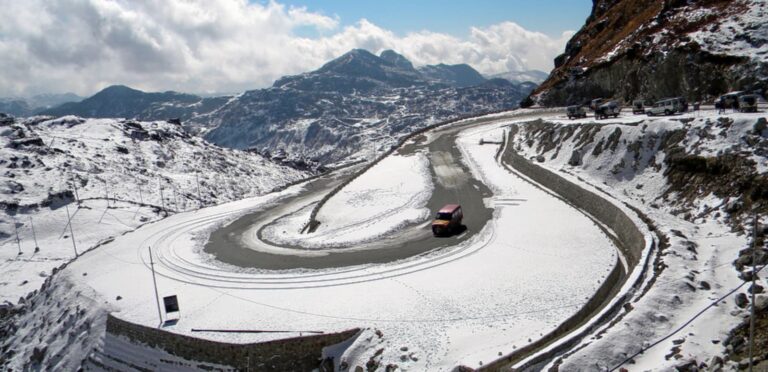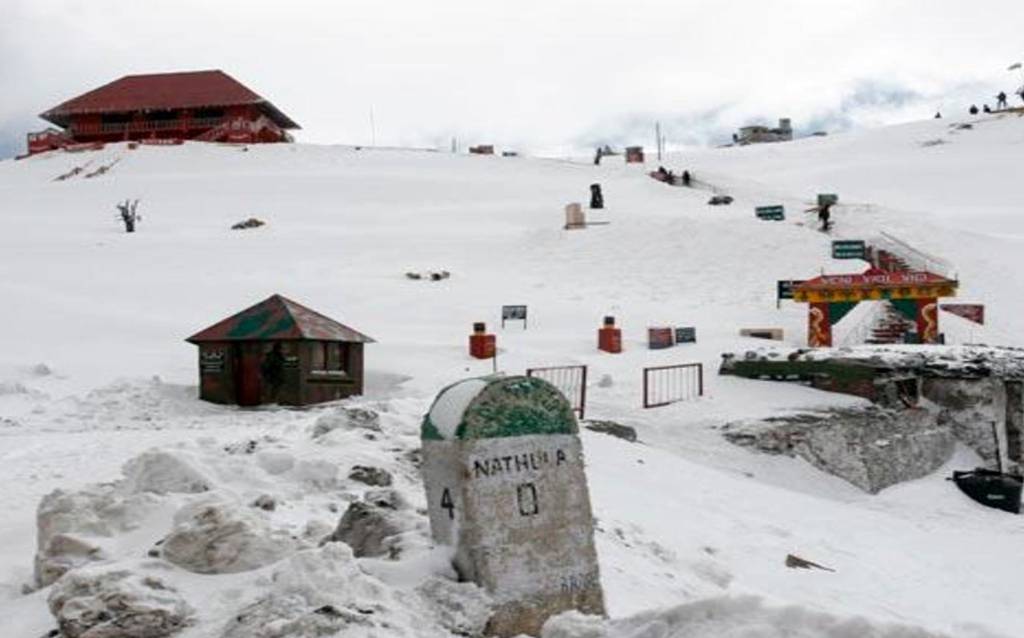NATHULA PASS
Nathula Pass stands as a sentinel at the crossroads of culture, history, and breathtaking natural beauty. This high-altitude mountain pass, located in East Sikkim, is not just a gateway between India and China but a journey through time, offering a glimpse into the ancient Silk Route’s storied past.
At an elevation of 14,140 feet, Nathula Pass is one of the highest motorable roads in the world, presenting visitors with a unique blend of challenges and exhilarations. The journey to Nathula is as mesmerizing as the destination itself, with the winding roads of Jawaharlal Nehru Road offering panoramic views of the rugged terrain, punctuated by the vibrant colors of rhododendrons and other alpine flora.
The pass’s name, ‘Nathula,’ meaning ‘listening ears,’ and ‘La,’ meaning ‘pass,’ reflects its historical significance as a corridor of listening and exchange. It was here that traders from Tibet and India exchanged goods like silk, gold, and spices, weaving a tapestry of cultural and economic ties that have stood the test of time.
Today, Nathula Pass is a symbol of peace and cooperation, having been reopened for trade in 2006 after being closed for almost four decades. The pass operates under strict regulations, with entry permitted only to Indian nationals, who can obtain a Protected Area Permit to experience this marvel of nature and history.
Visitors to Nathula Pass are greeted by the sight of the Indian Army’s presence, a reminder of the strategic importance of this location. The soldiers stationed here not only protect the borders but also serve as ambassadors of goodwill, often interacting with tourists and sharing stories of their life at such an altitude.

The pass is open to visitors from Wednesday to Sunday, weather permitting, and the best time to visit is from May to October, when the skies are clearer, and the full glory of the Himalayas is on display. However, travelers must be prepared for the unpredictable weather, as the pass can be enveloped in mist or a sudden snowfall, adding to the mystique of the place.
One of the most remarkable features near Nathula Pass is the Tsomgo Lake, also known as Changu Lake, a glacial lake that reflects the surrounding peaks like a giant mirror. The lake is considered sacred by the locals and changes colors with the seasons, from deep blue to emerald green.
Another notable attraction is the Baba Harbhajan Singh Memorial Temple, dedicated to an Indian Army soldier who is revered by soldiers and civilians alike for his spirit, believed to protect and bless those who visit the pass.
For the adventurous souls, Nathula Pass offers more than just scenic beauty. It is a starting point for numerous treks that delve deeper into the Himalayas, leading to serene monasteries, untouched forests, and the vibrant wildlife of the Kyongnosla Alpine Sanctuary.
The journey to Nathula Pass is not just a trip; it’s an adventure that tests one’s endurance and rewards with unparalleled experiences. It’s a place where the clouds seem within reach, and the silence of the mountains speaks volumes. It’s a destination that should be on every traveler’s bucket list, not just for its natural splendor but for the stories it holds, the history it has witnessed, and the peace it symbolizes in a world of tumult.
As you stand at Nathula Pass, gazing into the horizon where the sky kisses the earth, you realize that some places don’t just offer a view; they offer a perspective. Nathula Pass is one such place, a testament to the enduring spirit of the Himalayas and the timeless allure of Sikkim’s high-altitude wonder.


